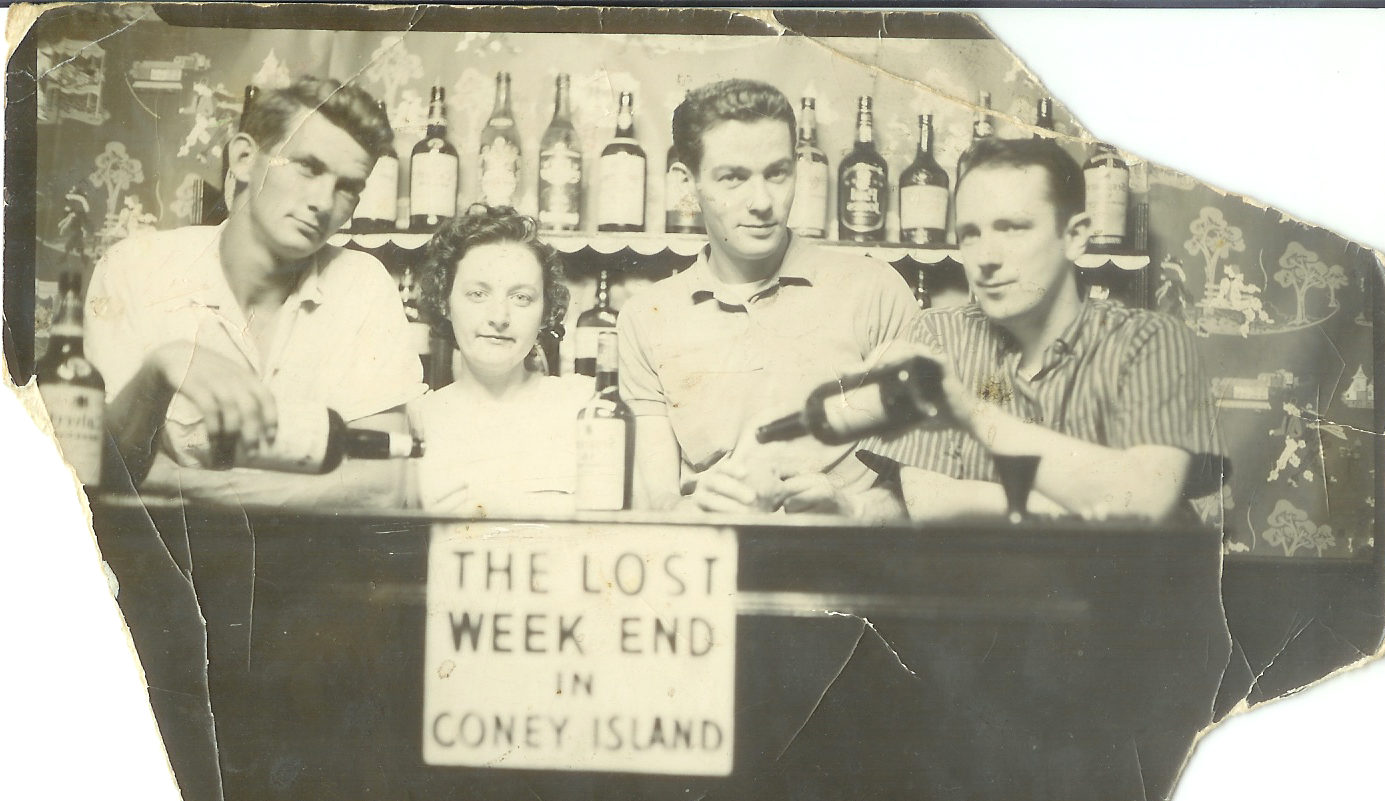Moderated by Marc Stein
This week marks the fiftieth anniversary of the U.S. Supreme Court’s 6-3 decision in Boutilier v. the Immigration and Naturalization Service (1967), which upheld the deportation of Clive Michael Boutilier (1933-2003), a U.S. permanent resident from Canada. Boutilier had migrated from Nova Scotia to New York in 1955. In 1963, on his application for U.S. citizenship, he noted that in 1959 he had been arrested, but not convicted, on a sodomy charge in New York. During a subsequent INS interrogation, Boutilier revealed that he had engaged in same-sex and cross-sex sex before entering the United States and that he had continued to engage in same-sex sex with his male partner and with other men after moving to the United States.
Based on this information, the INS classified Boutilier as an alien “afflicted with psychopathic personality” and ordered his deportation. The “psychopathic personality” provision of the 1952 Immigration and Nationality Act remained in effect until Congress repealed it in 1990, though LGBTQ immigrants to the United States continue to be vulnerable to exclusion, deportation, and other forms of persecution by the U.S. government.
To commemorate the anniversary of one of the LGBT movement’s most important early losses before the U.S. Supreme Court, NOTCHES is pleased to host a roundtable with five scholars who have studied Boutilier and related aspects of queer immigration. Below, these scholars introduce their work and address the following question: “In an era of heightened nationalism, racism, xenophobia, and border policing, what can Boutilier v. INS and other queer immigration cases teach us about our present?” This roundtable coincides with the launch of a new historical exhibit on the Boutilier case that is being hosted by OutHistory.org.

Julio Capó, Jr.: It’s important to contextualize the Boutilier case as part of a long history of how the state sought to define acceptable gender and sexual norms. As the scholars in this roundtable—along with others, including Margot Canaday and Nayan Shah—have shown, the state has historically struggled in its uniform regulation of gender and sexuality at the borders because concepts of “deviance” and “normalcy” are indeed slippery and informed by changing ideas of class, race, ethnicity, nation, age, and (dis)ability.The 1952 Immigration and Nationality Act (perhaps better known as the McCarran-Walter Act), which helped seal Clive Boutilier’s fate, sought to exclude foreign “sexual perverts or homosexual persons” from entering the country. That language was not written into the law then, however, as the Public Health Service advised that they would fall under the broader “psychopathic personality or mental defect” categorization either way. While this was the first time U.S. immigration law had distinctly sought to weed them out, that policy followed a longer history of defining desirable entrants and citizens through hetero-patriarchal norms.
My research has pointed to the ways immigrants, migrants, tourists, temporary visitors, and residents have historically “queered” the borders, the state, and the immigration system before and after the passing of the 1952 law. My first foray into this work dealt with the experiences of the queers who came from Cuba in 1980 during the controversial Mariel boatlift. In “Queering Mariel,” I showed how Cold War pressures led to the easing of the 1952 prohibition on the admission of those who committed homosexual acts. These same Cold War politics led to the implementation of a proto-“Don’t Ask, Don’t Tell” policy, in part to welcome people fleeing communism.
Because I’m particularly keen to understand the state’s changing motives for regulating sexuality, gender, and race at the border, I have also been conducting research on a 1956 case that didn’t reach the U.S. Supreme Court, but preceded the Boutilier decision and was critical to its formulation: United States v. Roberto Flores-Rodriguez. I have been particularly drawn to this case because the plaintiff, a Cuban native, had previously been arrested for homosexual cruising in New York City. Just weeks before the 1952 Act went into effect, he told officials at the American Consulate in Havana that he had never been arrested, indicted, or convicted of an offense that would render him ineligible for admission and residency in the United States. Several state power brokers had to determine whether the policy constituted a formal existing procedure, despite not having been explicitly written into law previously, as a de facto attempt to weed out undesirables.
Boutilier remains relevant today. In late January, President Donald Trump signed Executive Order 13769. It cited the Immigration and Nationality Act as the legal basis of the administration’s actions to “protect the American people from terrorist attacks by foreign nationals admitted to the United States.” Although that particular executive order, often dubbed a “Muslim ban,” has since been overturned by judicial challenge, the racist and nativist fervor behind it has found numerous other outlets in the Trump Administration’s policies and rhetoric. “DREAMers,” or undocumented people who were brought to the United States at young ages, have been at the forefront of the opposition to these and many other U.S. policies, which have been accompanied by a rise in xenophobia, racism, anti-Semitism, Islamophobia, classism, able-bodiness, homophobia, transphobia, and ageism. Many “UndocuQueers” who have “come out” as both undocumented and queer take countless risks in this plight for social justice and inclusion. Surely, while Boutilier was not exactly a willing participant or test case for some of these issues back in the 1960s, he’s a major player in the long-fought and complex history of challenges to the state’s views of who is admissible, desirable, and worthy of residency and citizenship. We must study and learn from our losses, including the Boutilier decision, to help secure more victories in these dark and uncertain times.
Siobhan Somerville: In broad terms, my research investigates the ways in which discourses of sexuality have historically been entwined with discourses of race in the United States. I first began studying the Boutilier decision in depth when I discovered that the case was decided just three weeks before the much more famous case of Loving v. Virginia (1967), which struck down state laws against interracial marriage as unconstitutional. (The Loving case is, of course, also being commemorated this year on its fiftieth anniversary.) Although the Loving and Boutilier cases were not explicitly linked in terms of specific legal issues, I was struck by their coincidence and wondered how they might have been connected in the Court’s decision-making. What had led the Supreme Court to decriminalize interracial marriage – and thus to destigmatize a form of historically prohibited sexuality (at least in the eye of the law) – while, almost in the same breath, it resoundingly re-stigmatized another, homosexuality? As I argued in my article, “Queer Loving,” the close proximity of Boutilier and Loving forces us to consider the possibility that interracial marriage achieved normative status (in legal terms, at least) at the very moment when the homosexual was rendered unambiguously and quite literally un-American. [In an ironic twist, Loving did become a key legal precedent for the Court’s decision guaranteeing the right to same-sex marriage in Obergefell v. Hodges (2015), a ruling that has also had an impact on immigration, facilitating the entry of gay people who are legally married to U.S. citizens.]
Within our own historical moment – and the unpredictable future of immigration and deportation policies — the relevance of the Boutilier case is not simply about his status as a gay man or the history of homosexuality and immigration. The Boutilier case seems important to remember because it demonstrates the long history of the stark — and, indeed, cruel and irrational — distortions that are made in an effort to produce a stigmatized “un-American” figure against which the nation can define itself, often for geopolitical purposes. A chilling aspect of Boutilier’s case is the way the Supreme Court ignored the opinion of Boutilier’s doctors, who confirmed that he had engaged in homosexual practices but insisted that he did not exhibit a “psychopathic personality.” The Supreme Court dismissed their medical authority, concluding that “the Congress used the phrase ‘psychopathic personality’ not in the clinical sense, but to effectuate its purpose to exclude from entry all homosexuals and other sex perverts.”
The Court’s contortions of logic and language reveal that the (arbitrary) desire to exclude came first, rather than any perceived threat to the nation. We see a similar maneuver at work recently, not so much from the judicial branch, which has generally been an important restraint on the capriciousness of executive orders, but in the larger public discourse spurring new policies targeting Muslims, undocumented people, and refugees as un-American or inherently excludable, based on nothing more than hate and fear. While immigration and nationality law no longer uses homosexuality, per se, to shore up national boundaries, the populations made newly vulnerable under new immigration and refugee policies are, it’s worth remembering, sexually diverse — and diverse in any number of ways that can’t be predicted – facts that are often lost in the noise of racist and anti-immigrant rhetoric. Remembering the complexity of these targeted groups, while remembering Boutilier’s own sexual complexity, might be a useful anchor in any discussion about what Boutilier can help us understand about our stormy present.
Marc Stein: My work on Boutilier v. INS focuses on three main issues. First, I look at the Supreme Court’s “conservative” ruling in Boutilier in relation to its “liberal” decisions on abortion, birth control, cohabitation, interracial marriage, and obscenity in the same era. I use these juxtapositions to challenge the notion that the Supreme Court’s rulings in the heyday of the “sexual revolution” were libertarian or egalitarian. I argue instead that these decisions affirmed a raced, classed, and gendered doctrine of heteronormative supremacy. I then look at the people and organizations that fought for Boutilier, which included advocates affiliated with the American Committee for the Protection of the Foreign Born, the American Civil Liberties Union, and the Homosexual Law Reform Society. Third, I examine public reception of the decision, exploring the reasons that the case was generally forgotten and arguing that, in part, this was because immigration was not seen as an important LGBT issue.
In the context of the new politics of immigration restriction, I have been thinking about the relevance of Boutilier. On the one hand, we can use the case to think about historical intersections of exclusion. For instance, the Boutilier Court relied on the precedent of the Chinese Exclusion Cases, declaring that if Congress could exclude Chinese people from immigrating in the late-nineteenth and early-twentieth centuries, it could exclude “homosexuals” from immigrating in the 1950s and 1960s. It has less often been noted that the actions of Congress and the Supreme Court rested on the taken-for-granted assumption that the United States could and should impose immigration restrictions on people with disabilities (“psychopathic personality” was conceptualized as a type of mental illness and the 1952 law listed it alongside other psychiatric conditions).
On the other hand, we can also use Boutilier to think about intersectional political resistance. While I have been critical of some of the arguments that Boutilier’s advocates used in court, I am still amazed that lawyers and activists affiliated with American Committee for the Protection of the Foreign Born, the American Civil Liberties Union, and Homosexual Law Reform Society came together to fight for Boutilier. As I researched their prior cases, I came to understand how they deployed arguments that had been developed in the context of fighting for non-LGBT people — communists, immigrants, people of color, people with disabilities, and others — and adapted them to defend Boutilier. More recently, I have written about the Ninth Circuit’s reference to another gay immigration case from the 1960s (Fleuti v. Rosenberg) in its decision against the Trump administration’s “Muslim ban.” I think our present moment demands that we develop new ways of thinking about intersectional political resistance and new ways of building stronger political coalitions.
Amy Sueyoshi: When I first learned about Boutilier as a graduate student in 1990s, I was astounded that even white people could be deported. Why had Boutilier imprudently confessed to an arrest for which a conviction never occurred? If he had a green card, why even bother for citizenship? My cynicism over Asians being denied entry and naturalization for more than half a century drove my perhaps naïve reaction. The 1882 Chinese Exclusion Act ostensibly halted immigration from China and naturalization restrictions banned Japanese people from U.S. citizenship until 1952, despite their presence in the United States since the 1890s. Not until 1965 would immigration reform inadvertently loosen the chokehold on Asian immigration. Moreover, my own mother had lived peaceably, but not without struggle, for more than thirty years as a permanent resident. As I wonder about a deeper analysis of the Boutilier case in terms of whiteness, I am reminded about lying as a survival strategy in a world fearful of difference.
Lying is by no means exclusive to communities of color – white folks lie too. Yet I evoke lying here as a mode of survival for disenfranchised communities. It has been used productively as a survival strategy for queer communities and communities of color alike during particularly unjust times. My own research focuses on the turn of the century, when queers, Asians, as well as queer Asians participated in unapologetic lying to forge stability if not fulfillment in their own lives. Western writer and rice queen Charles Warren Stoddard, who founded the elite Bohemian Club, lived his gay life quietly even as those in his inner circle of friends were intimately aware of his sexual proclivities. Japanese immigrant poet Yone Noguchi, the father of Asian American artist Isamu Noguchi, also lied unabashedly to multiple lovers, male and female, in the 1890s and early 1900s, not only for intimacy but also for acceptance in the racially exclusionary United States and an increasingly heteronormative Japan. White men caught in a San Francisco fellatio club, which newspapers called the “Baker Street Vice Ring,” used interest in Japanese culture as a public but coded signal that they enjoyed the company of other men. The Baker Street men ultimately evaded conviction by strategically “forgetting” what happened at their club during a public investigation into their activities. Indeed, countless queers likely lied to avoid trouble, even if they later found more trouble by lying. These troubling queers would not make ideal plaintiffs in a Supreme Court case. Still, it’s important to not forget the individual work of these liars as part of queer history, in the same way we had previously forgotten about Boutilier v. INS since it appeared to be an unproductive case for the gay movement.
Eithne Luibhéid: In Entry Denied, I argue that nation-state immigration controls are implicated in the ongoing (re)production of nationalist heteronormativity. In the United States, nationalist heteronormativity mandates “proper” gender and sexual ordering, white privilege, exploitation of the poor, and neocolonialism. Thus, until 1990, migrants who identified as or were presumed to be LGBTQ were denied admission and targeted for deportation in ways that articulated racial, gender, economic, and geopolitical inequalities.
Boutilier is among several key immigration cases that help us to understand histories of discrimination and struggle in the lives of LGBTQ migrants. Another such case is Sara Harb Quiroz v. Marcus T. Neelly (1961). Reading Boutilier and Quiroz side by side shows that women as well as men were targeted by LGBTQ exclusion and deportation policies, often in distinct ways. Moreover, the cases underscore how racism, neocolonialism, and capitalist exploitation materially shaped who was targeted and how, and whether these migrants’ struggles generated a written record.
In 1965, racial and ethnic exclusions were formally removed from US immigration law, and in 1990, LGBTQ exclusion was removed. Nonetheless, migrants, including LGBTQ-identified people, are still routinely excluded from admission, or detained and deported after legal admission, on multiple grounds that intersect with LGBTQ status. In part, this occurs because U.S. immigration laws do not address the root causes of global immigration, or the United States’ role in these causes. Instead, in service to “the national interest,” criteria for admission have become narrowed; vast numbers are being routed into undocumented status; the U.S./Mexico border has been drastically militarized; migrant deaths have risen precipitously; undocumented and documented migrants have been increasingly criminalized; detention and deportation have skyrocketed; and millions of families including queer ones have been torn apart. These dynamics, which are aggressively expanding under the Trump administration, underscore the limits of seeking recognition and inclusion within violent nation-state immigration controls.
Further illuminating the limits of struggles that are focused primarily on recognition and inclusion, in 2012, in response to protests about the severe abuse of detained LGBTQ migrants, the immigration service created a special “LGBT detention pod.” They claimed that pod staff were specially trained to be sensitive to LGBTQ migrant detainee needs and that the pod “protected” LGBTQ migrants (although reports strongly dispute these claims). In 2016, trans and queer migrants of color organized to protest the pod. They did not ask for better recognition, fuller inclusion, or more LGBT-sensitive detention (which is an obscene oxymoron anyway); rather, they demanded complete closure of the pod and an end to all immigrant detention. Their analysis linked the pod to state-sanctioned violence and terror that reproduces multiple inequalities and dispossess migrants and citizens alike. Their protest made visible the urgent need for interventions that go beyond seeking recognition or inclusion to demand systemic transformation and ultimately the complete abolition of violent nation-state immigration controls.
 Julio Capó, Jr. is Assistant Professor in the Department of History and Commonwealth Honors College at the University of Massachusetts, Amherst. Capó researches modern inter-American histories, with a focus on queer, sexuality, gender, Latinx, race, (im)migration, and empire studies. His forthcoming book, Welcome to Fairyland: Queer Miami Before 1940 (University of North Carolina Press), chronicles Miami’s transnational queer past from 1890 to 1940. His work has appeared in several academic and mainstream outlets, including Diplomatic History, Journal of Urban History, Journal of American Ethnic History, TIME, Washington Post, and Miami Herald.
Julio Capó, Jr. is Assistant Professor in the Department of History and Commonwealth Honors College at the University of Massachusetts, Amherst. Capó researches modern inter-American histories, with a focus on queer, sexuality, gender, Latinx, race, (im)migration, and empire studies. His forthcoming book, Welcome to Fairyland: Queer Miami Before 1940 (University of North Carolina Press), chronicles Miami’s transnational queer past from 1890 to 1940. His work has appeared in several academic and mainstream outlets, including Diplomatic History, Journal of Urban History, Journal of American Ethnic History, TIME, Washington Post, and Miami Herald.
 Eithne Luibhéid is Professor of Gender and Women’s Studies at the University of Arizona. Her research focuses on the connections among queer lives, state immigration controls, and justice struggles. Luibhéid is the author of Pregnant on Arrival: Making the ‘Illegal’ Immigrant (2013) and Entry Denied: Controlling Sexuality at the Border (2002). She is the editor of “Queer Migrations,” a special issue of GLQ (2008), and the co-editor of A Global History of Sexuality (2014); Queer Migrations: Sexuality, Citizenship, and Border Crossings (2005); and “Representing Migrant Women in Ireland and the E.U.,” a special issue of Women’s Studies International Forum (2004). With Karma Chávez and Julio Salgado, she is currently co-editing Queer Migrations 2: Illegalization, Detention and Deportation.
Eithne Luibhéid is Professor of Gender and Women’s Studies at the University of Arizona. Her research focuses on the connections among queer lives, state immigration controls, and justice struggles. Luibhéid is the author of Pregnant on Arrival: Making the ‘Illegal’ Immigrant (2013) and Entry Denied: Controlling Sexuality at the Border (2002). She is the editor of “Queer Migrations,” a special issue of GLQ (2008), and the co-editor of A Global History of Sexuality (2014); Queer Migrations: Sexuality, Citizenship, and Border Crossings (2005); and “Representing Migrant Women in Ireland and the E.U.,” a special issue of Women’s Studies International Forum (2004). With Karma Chávez and Julio Salgado, she is currently co-editing Queer Migrations 2: Illegalization, Detention and Deportation.
 Siobhan Somerville is Associate Professor of English and Gender and Women’s Studies at the University of Illinois at Urbana-Champaign. She is the author of Queering the Color Line: Race and the Invention of Homosexuality in American Culture (2000); editor of the Cambridge Companion to Queer Studies; and co-editor of a special issue of GLQ on “Queering the Middle: Race, Region, and Sexual Diasporas” (2014). Her research has appeared in journals such as American Literature, American Quarterly, Criticism, and the Journal of the History of Sexuality, as well as in volumes such as Queer Migrations: Sexuality, Citizenship, and Border Crossings (2005). She is currently finishing a book entitled A Queer Genealogy of Naturalization in the United States under contract with Duke University Press, which traces the history of naturalization at the intersections of the racial state, the sexual state, and the settler colonial state.
Siobhan Somerville is Associate Professor of English and Gender and Women’s Studies at the University of Illinois at Urbana-Champaign. She is the author of Queering the Color Line: Race and the Invention of Homosexuality in American Culture (2000); editor of the Cambridge Companion to Queer Studies; and co-editor of a special issue of GLQ on “Queering the Middle: Race, Region, and Sexual Diasporas” (2014). Her research has appeared in journals such as American Literature, American Quarterly, Criticism, and the Journal of the History of Sexuality, as well as in volumes such as Queer Migrations: Sexuality, Citizenship, and Border Crossings (2005). She is currently finishing a book entitled A Queer Genealogy of Naturalization in the United States under contract with Duke University Press, which traces the history of naturalization at the intersections of the racial state, the sexual state, and the settler colonial state.
 Marc Stein is the Jamie and Phyllis Pasker Professor of History at San Francisco State University. His work on Boutilier has been published in Sexual Injustice: Supreme Court Decisions from Griswold to Roe (2010) and in essays that have appeared in Law and History Review, torquere, Journal of American Ethnic History, Perspectives, Connexions: Histories of Race and Sex in North America, and Understanding and Teaching U.S. Gay, Lesbian, Bisexual, and Transgender History. He is also the author of City of Sisterly and Brotherly Loves: Lesbian and Gay Philadelphia (2000) and Rethinking the Gay and Lesbian Movement (2012). He recently edited a special issue of the Journal of Homosexuality titled “U.S. Homophile Internationalism.” His online exhibit on Boutilier v. INS is available on OutHistory.org.
Marc Stein is the Jamie and Phyllis Pasker Professor of History at San Francisco State University. His work on Boutilier has been published in Sexual Injustice: Supreme Court Decisions from Griswold to Roe (2010) and in essays that have appeared in Law and History Review, torquere, Journal of American Ethnic History, Perspectives, Connexions: Histories of Race and Sex in North America, and Understanding and Teaching U.S. Gay, Lesbian, Bisexual, and Transgender History. He is also the author of City of Sisterly and Brotherly Loves: Lesbian and Gay Philadelphia (2000) and Rethinking the Gay and Lesbian Movement (2012). He recently edited a special issue of the Journal of Homosexuality titled “U.S. Homophile Internationalism.” His online exhibit on Boutilier v. INS is available on OutHistory.org.
 Amy Sueyoshi is Associate Dean of the College of Ethnic Studies at San Francisco State University. She has published on topics ranging from cross-dressing, same-sex marriage, romantic friendship, and Asian American pornography in journals such as Frontiers, Amerasia, and the Journal of American Ethnic History. She is the author of Queer Compulsions: Race, Nation, and Sexuality in the Intimate Life of Yone Noguchi (2012). Her second book, titled Discriminating Sex: White Pleasure and the Making of Asian America, is forthcoming from the University of Illinois Press. She is a founding co-curator of the GLBT History Museum, the first queer history museum in the United States, and the recipient of the Willie Walker Award for service to the GLBT Historical Society. She also initiated the Dragon Fruit Project, a community oral history project for API Equality Northern California, a queer Asian Pacific Islander advocacy group in San Francisco’s Chinatown.
Amy Sueyoshi is Associate Dean of the College of Ethnic Studies at San Francisco State University. She has published on topics ranging from cross-dressing, same-sex marriage, romantic friendship, and Asian American pornography in journals such as Frontiers, Amerasia, and the Journal of American Ethnic History. She is the author of Queer Compulsions: Race, Nation, and Sexuality in the Intimate Life of Yone Noguchi (2012). Her second book, titled Discriminating Sex: White Pleasure and the Making of Asian America, is forthcoming from the University of Illinois Press. She is a founding co-curator of the GLBT History Museum, the first queer history museum in the United States, and the recipient of the Willie Walker Award for service to the GLBT Historical Society. She also initiated the Dragon Fruit Project, a community oral history project for API Equality Northern California, a queer Asian Pacific Islander advocacy group in San Francisco’s Chinatown.

NOTCHES: (re)marks on the history of sexuality is licensed under a Creative Commons Attribution-NonCommercial-NoDerivatives 4.0 International License.
Based on a work at www.notchesblog.com.
For permission to publish any NOTCHES post in whole or in part please contact the editors at NotchesBlog@gmail.com




